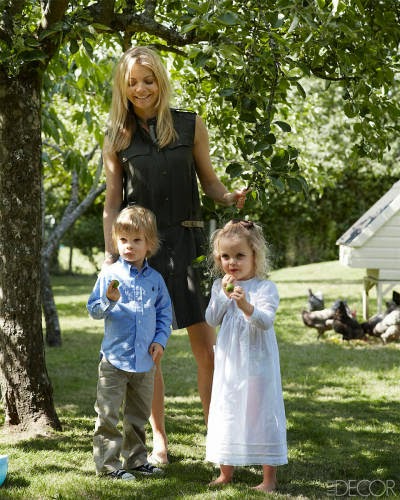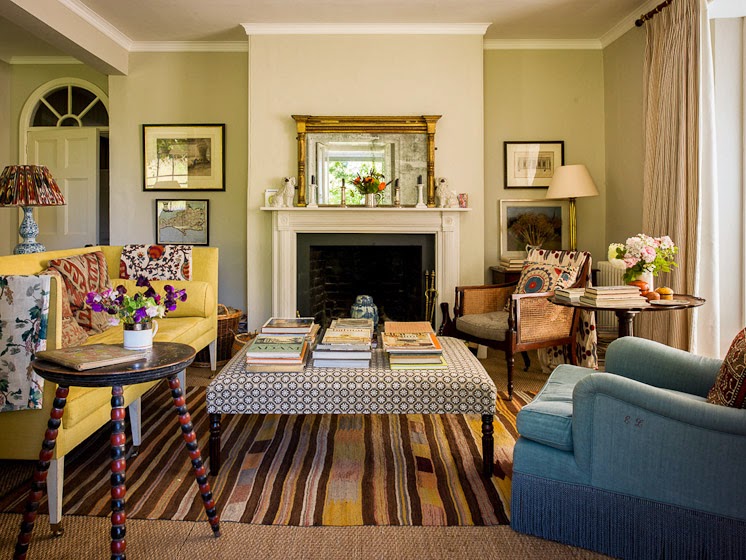The dining room at Alice Temperley's country house, Cricket Court, in Somerset, England
Photo via here
Photo via here
This weekend I had a serious case of Anglophilia. It started when I saw this article in the New York Times about Alice Temperley's country house, Cricket Court, in Somerset, England. She lives there with her husband and young son. She is the British fashion designer whose romantic, feminine and lacy frocks would look perfect worn at a summer garden party in the Somerset hills. I love this dining room (shown above) and the way the outside and inside are so connected. The English do this so well. I also love the hand-painted wallpaper and giant papier-mache foxglove, a touch of English eccentricity that gives the room a sense of humor. Can't you just imagine characters from an Angela Thirkell novel wandering in and out of this space?
The house has a rich history. It was built by William the Conqueror for his brother, rebuilt after a fire at the beginning of the 18th century, and was once home to the exiled Leo Tolstoy. Alice Temperley's love of textiles is seen throughout; her study and one of her bathrooms have pieces of vintage fabric hanging in the windows. The house is filled with wit and whimsy. Go here to read more.
The next country retreat I spotted was in the April issue of Elle Decor. Another historic home, this one dates from the 18th century and is part of an estate that once belonged to the Duke of Wellington. Jemma Kidd, a former model and now a make-up artist and her husband Arthur Wellsley, Earl of Mornington, live here with their two young children. Outside the countryside is green and lush, thanks to the English rain. And inside the rooms make you want to settle in with a good book and a cup of tea. I love how this young family moved into a venerable English home and managed to make it look youthful and fresh. Take a look:
Alice Temperley sketching her bridal collection ( left) and playing with her son and nephew (right)
Photo via here
The home of Jemma Kidd and her family in Hampshire
The next country retreat I spotted was in the April issue of Elle Decor. Another historic home, this one dates from the 18th century and is part of an estate that once belonged to the Duke of Wellington. Jemma Kidd, a former model and now a make-up artist and her husband Arthur Wellsley, Earl of Mornington, live here with their two young children. Outside the countryside is green and lush, thanks to the English rain. And inside the rooms make you want to settle in with a good book and a cup of tea. I love how this young family moved into a venerable English home and managed to make it look youthful and fresh. Take a look:
Jemma Kidd with her twins
The drawing room
The sitting room
The entrance
The guest bedroom
A bathroom
The library
Do you notice a touch of red in almost every room? That's one of the elements that makes this house a warm and welcoming place. Filled with family heirlooms, whimsical fabrics, vases of flowers and loads of books, the house feels cheerful, collected and lived-in. The interior designer has done a fabulous job combining a romantic English country look with a twenty-first century sensibility. Go here to read more.
Photos via here
Prince George at eight months
Photo via here
And finally, speaking of adorable young English families, there was this. A photo that was released just this weekend. It is the most recent shot of the royal baby and his parents at their home in Kensington Palace. Can it be that eight months have already gone by? Pretty cute!



























































